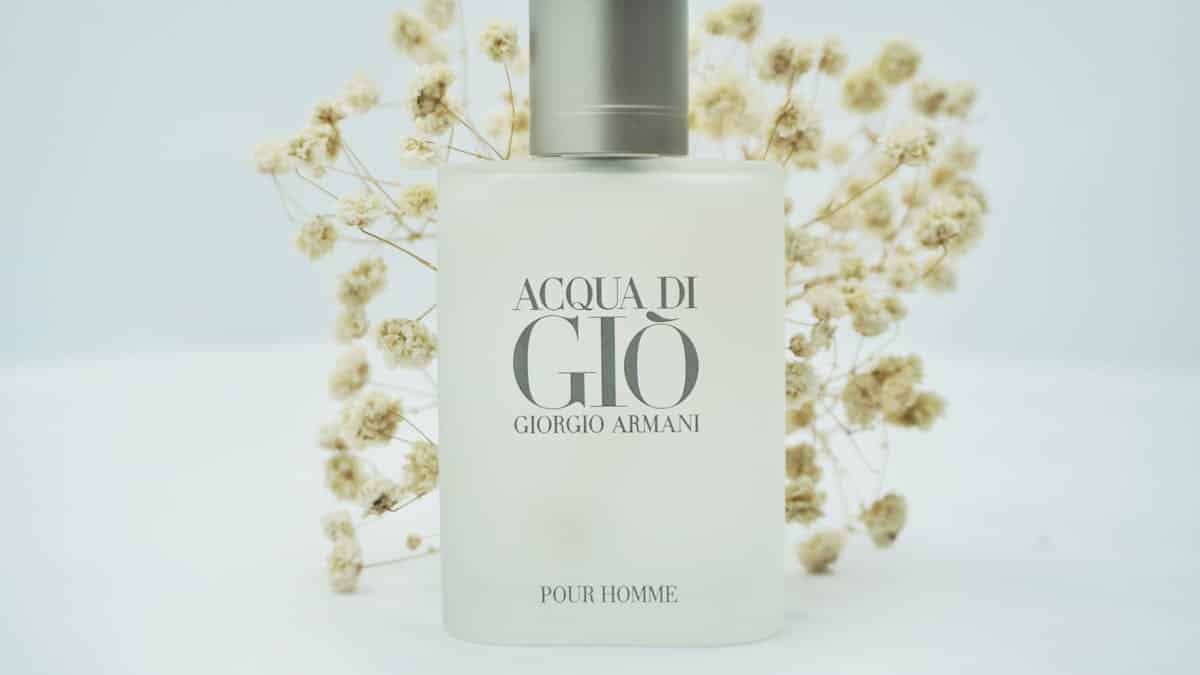Here is your complete guide to Italian perfume.
Introduction to Italian Perfume
The air shimmers with the promise of sun-drenched landscapes, the echo of ancient artistry, and the whisper of timeless elegance. This is the allure of Italian perfume, a world where fragrance transcends mere scent and becomes a narrative, a memory, a piece of history bottled for your delight. For centuries, Italy has been a cradle of artistic expression, and its perfume industry is no exception. From the sun-kissed citrus groves of Sicily to the delicate floral fields of Tuscany, Italian perfume captures the essence of the country’s natural beauty and cultural heritage.
The legacy of Italian perfume is woven into the very fabric of the nation’s identity, influencing fashion, art, and lifestyle for generations. With its roots tracing back centuries, Italian perfume has evolved into a symphony of aromas that tantalize the senses and evoke emotions. This article aims to be your comprehensive guide to the captivating world of Italian perfume. We’ll delve into its rich history, explore iconic brands, dissect captivating scent profiles, and empower you to choose the perfect Italian perfume to express your unique style.
Italian perfumery represents a unique blend of tradition, innovation, and natural ingredients, resulting in world-renowned fragrances that embody the Italian spirit.
A Brief History of Italian Perfume
The story of Italian perfume is a fragrant journey through time, starting long before the modern industry we know today. The earliest roots can be traced back to ancient civilizations that inhabited the Italian peninsula. However, the formal development of Italian perfume began in the Middle Ages, profoundly influenced by the Arab world.
- Early Influences: The art of distillation, brought to Italy by Arab traders, revolutionized the extraction of essential oils and fragrant compounds.
- The Renaissance Era: During the Renaissance, Italy became a center for perfume production, with wealthy families commissioning bespoke fragrances.
- Santa Maria Novella: The creation of the Santa Maria Novella House in Florence in 1612 marked a pivotal moment, as it became one of the oldest pharmacies in the world and a pioneer in perfume making.
Over the centuries, Italian perfumery continued to evolve. The rise of Italian fashion houses in the 20th century further cemented the nation’s position as a global leader in fragrance. Today, Italian perfume blends time-honored techniques with cutting-edge innovation, maintaining its reputation for quality and artistry.
Characteristics of Italian Perfumes
What sets Italian perfumes apart from the rest? Several key characteristics define their unique appeal:
- Natural Ingredients: Italian perfumes often rely on high-quality, locally sourced ingredients. Italian bergamot, jasmine, and rose are just a few examples of ingredients that lend distinctive aromas to Italian fragrances.
- Craftsmanship and Attention to Detail: The creation of an Italian perfume is a meticulous process. Master perfumers carefully blend each ingredient, paying close attention to the balance and harmony of the scent.
- Emotional Connection: Italian perfumes are designed to evoke emotions and memories. Whether it’s the warmth of the Mediterranean sun or the romance of a Tuscan sunset, these fragrances create a sensory experience that resonates with the wearer.
Italian Perfume Brands: A Landscape Overview
The world of Italian perfume is populated by iconic fashion houses, niche artisans, and heritage brands, each with its own unique vision. Here’s an overview of some notable players:
- Luxury Fashion Houses:
- Versace: Known for its bold, glamorous fragrances.
- Gucci: Combines classic elegance with modern trends.
- Prada: Emphasizes innovation and unconventional scent combinations.
- Dolce & Gabbana: Infuses its perfumes with a sense of sensuality and romance.
- Niche Italian Brands:
- Acqua di Parma: Celebrated for its classic Italian colognes featuring citrus notes, particularly bergamot.
- Etro: Draws inspiration from the world of art, travel, and textiles.
- V Canto: Craft sensory tales inspired by Italian heritage, culture, and natural beauty.
Top Italian Perfume Brands
| Brand | Signature Scent(s) | Characteristics |
|---|---|---|
| Versace | Eros, Bright Crystal | Bold, glamorous, and confident fragrances. |
| Gucci | Bloom, Guilty | Classic elegance with modern twists. |
| Prada | Candy, L’Homme | Innovative and often unconventional scent combinations. |
| Dolce & Gabbana | Light Blue, Dolce Floral Drops | Sensual, romantic, and evocative of the Mediterranean. |
| Acqua di Parma | Colonia | Classic Italian cologne with prominent citrus notes. |
| Etro | Magot, Paisley | Artistic and inspired by the world of travel and textiles. |
| V Canto | Stricnina, Kashimire | Creating sensory tales inspired by Italian heritage, culture and natural beauty. |
Navigating Italian Fragrances: Scent Profiles
The variety of Italian fragrances is as diverse as the Italian landscape itself. Understanding common scent profiles can help you navigate this world:
- Floral Scents: Featuring notes of jasmine, rose, lavender, and other blooms, floral perfumes evoke romance and femininity.
- Examples: Dolce & Gabbana Dolce Floral Drops, Valentino Valentina.
- Citrus Scents: With refreshing notes of bergamot, Sicilian lemon, and orange, citrus perfumes are bright and invigorating.
- Examples: Acqua di Parma Colonia, Giorgio Armani Acqua di Gioia.
- Fresh Aromas: Capture the crispness of the Italian countryside.
- Examples: Salvatore Ferragamo Tuscan Soul Bianco di Carrara, Diptyque Olène.
- Other Notes: Incorporates ingredients like myrtle, basil, sea breeze, amber, and woodsy elements.
Scent Profiles and Examples
| Scent Profile | Common Notes | Examples |
|---|---|---|
| Floral | Jasmine, Rose, Lavender | Dolce & Gabbana Dolce Floral Drops, Valentino Valentina |
| Citrus | Bergamot, Sicilian Lemon | Acqua di Parma Colonia, Giorgio Armani Acqua di Gioia |
| Fresh | Crispness of the Italian Countryside, Myrtle, basil, sea breeze | Salvatore Ferragamo Tuscan Soul Bianco di Carrara, Diptyque Olène |
| Other | Tuberose, Amber, Woodsy Elements | Gucci Bloom, Versace Eros, Prada Amber |
Italian Perfume Glossary
| Term | Definition |
|---|---|
| Bergamot | A citrus fruit with a distinctive aroma, commonly used in Italian perfumes. |
| Jasmine | A floral note known for its sweet and intoxicating scent. |
| Eau de Parfum | A fragrance concentration that typically lasts for 4-5 hours. |
| Eau de Toilette | A lighter fragrance concentration that typically lasts for 2-3 hours. |
| Notes | The individual scent components that make up a perfume. |
| Sillage | The trail of scent left behind by a perfume. |
The Art of Italian Perfumery
Italian perfumery is more than just mixing scents; it’s an art form. Master perfumers are like composers, carefully selecting and blending ingredients to create olfactory masterpieces. They pay meticulous attention to detail, from sourcing the highest quality ingredients to designing elegant packaging.
- Craftsmanship: The creation of Italian perfumes involves a delicate balance of tradition and innovation. Centuries-old techniques are combined with modern technology to create unique and captivating fragrances.
- Presentation: Italian perfume houses understand that presentation is key. The bottles themselves are often works of art, reflecting the elegance and sophistication of the fragrance within.
How to Choose the Right Italian Perfume
Selecting an Italian perfume can be a personal and rewarding experience. Here are some tips to guide you:
- Consider Your Taste: Do you prefer floral, citrus, woody, or oriental scents? Understanding your preferences is the first step.
- Match the Occasion: Consider when and where you’ll be wearing the perfume. Lighter, fresher fragrances are suitable for daytime, while richer, more intense scents are ideal for evenings.
- Test on Your Skin: Perfume smells different on everyone due to individual body chemistry. Always test a fragrance on your skin before committing to a purchase.
- Read Reviews: Explore online reviews and seek recommendations from fragrance experts to gain insights into different Italian perfumes.
Caring for Your Italian Perfume
To preserve the quality and longevity of your Italian perfume, follow these tips:
- Store Properly: Keep your perfume in a cool, dark place away from direct sunlight and heat.
- Original Packaging: Storing perfumes in their original packaging can help to protect them from light and temperature changes.
- Avoid Shaking: Shaking the perfume bottle can introduce air bubbles and potentially alter the scent.
- Apply Correctly: Apply perfume to pulse points, such as the wrists, neck, and behind the ears, to maximize its longevity.
Italian Perfume as a Gift
An Italian perfume makes an exquisite and thoughtful gift. When choosing a fragrance for someone else, consider their personality, style, and scent preferences. A well-chosen perfume can be a cherished and lasting reminder of your affection.
Gifting Guide based on Personality
| Personality | Scent Profile Suggestions | Example Italian Perfumes |
|---|---|---|
| Romantic | Floral, Warm, Sensual | Dolce & Gabbana Dolce Floral Drops, Versace Eros, Valentino Valentina |
| Energetic | Citrus, Fresh | Acqua di Parma Colonia, Giorgio Armani Acqua di Gioia |
| Sophisticated | Woody, Amber, Complex | Prada Amber, Gucci Guilty |
| Adventurous | Unique Blends, Aromatic | Etro Magot, V Canto Stricnina |
FAQs about Italian Perfume
What makes Italian perfumes unique?
Italian perfumes stand out due to their blend of time-honored traditions, innovative techniques, and the use of high-quality, natural ingredients. The craftsmanship and attention to detail in Italian perfumery are also unparalleled.
Which are some of the most famous Italian perfume brands?
Some of the most renowned Italian perfume brands include Versace, Gucci, Prada, Dolce & Gabbana, and Acqua di Parma.
Read Also: Hair Color Brings Out Eyes.
What are the main scent profiles in Italian perfumery?
The main scent profiles in Italian perfumery include floral, citrus, and fresh aromas. Additionally, you’ll find fragrances with woody, amber, and oriental notes.
Read Also: PRP Under Eyes Before and After.
How should I store my Italian perfume?
To preserve the quality of your Italian perfume, store it in a cool, dark place away from direct sunlight and heat.
Read Also: Fragrance Oil vs Spray.
Can Italian perfume be a good gift?
Yes, Italian perfume makes a wonderful gift, especially when chosen thoughtfully based on the recipient’s preferences and personality.
Read Also: Perfume Oil vs Perfume.
Conclusion
Italian perfume is more than just a fragrance; it’s a celebration of history, artistry, and Italian culture. With its rich heritage, diverse scent profiles, and commitment to quality, Italian perfumery continues to captivate the senses and inspire emotions around the world. Explore the world of Italian fragrances and discover the perfect scent to express your unique style and personality.
Read Also: Vanilla Powder Perfume.
References and Resources:
- Exploring the History of Italian Perfumes
- Italian Perfumery History – Essential Oils
- The Italian Perfumery Landscape
- The History of Italian Perfumes – LDF EN
- Italian Perfumery History: Iconic Scents Taken by Storm
- A Nose for Success – The Revolution of Italian Perfumery
- History of Italian perfumes – Fragrance Maker
- THE ITALIAN APPROACH TO PERFUMERY: AN EXPERT

